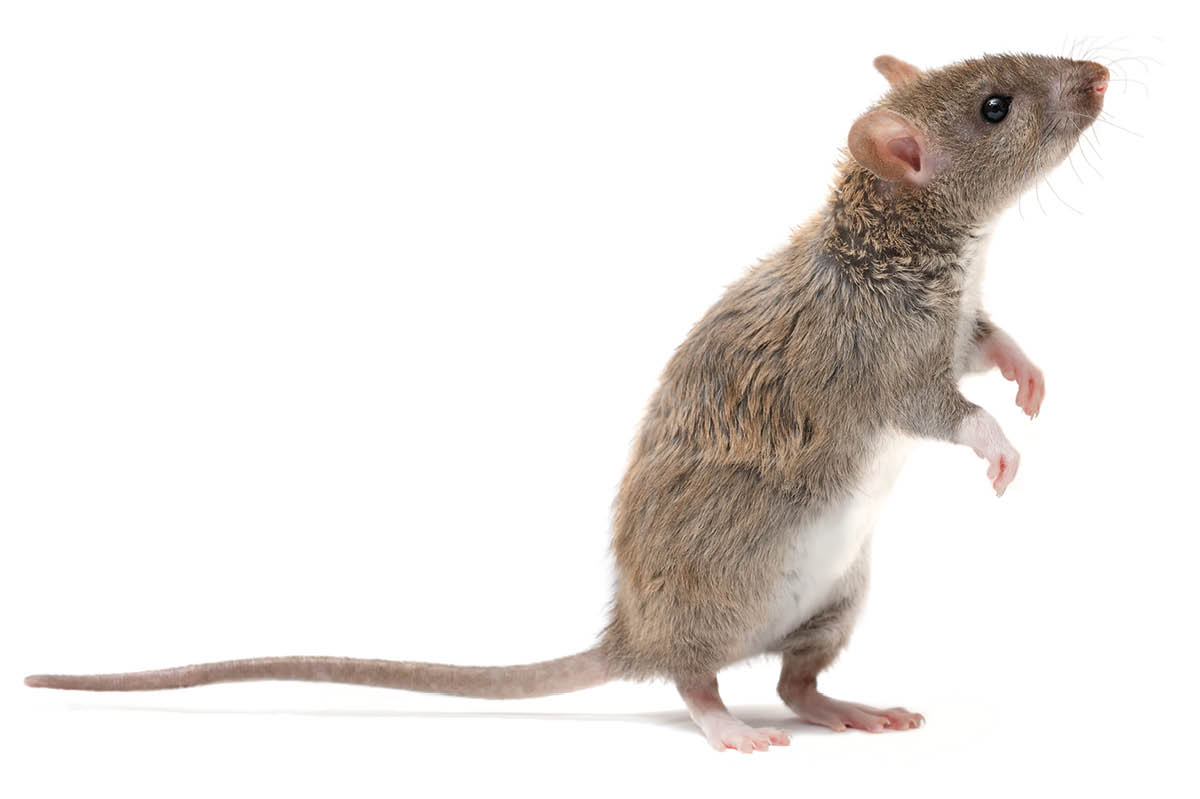The rat hunter opens the tongs, takes a breath and lunges forward. It takes him a few seconds to get a firm hold on the Norway rat, who claws, bites and shrieks at the wrought iron. Tim wrestles it into the bucket, holding its flailing form underneath the water for several seconds before slamming the top shut. “He put up a good fight,” says Tim, exhaling while he shakes his head. “Supervisor didn’t tell me it was a live one.”
Two days earlier, he’d been called to a home of a young woman – a “little girl” as he described her – where a rat had been caught in a trap inside a cabinet. He got to the house. He opened the cabinet. He saw the trap. He saw the rat. There was a problem: the trap was empty. The rat bared its teeth, shrieking and snarling at him as it darted back and forth between fight and flight modes. No time for tongs. He snatched the trap, pried those pointed jaws back open. Then he began swinging at the rat, armed trap in his hand. The jaws snapped shut on the rat’s tail. The rest was easy.
The cliché “I smell a rat” exists for a reason. Rats are repulsive. They stink and they’re greasy, leaving behind rank stains when they brush against walls. And they’re loud – really loud. A rat’s shriek, especially in its last moments of life, can reach 90 decibels, equivalent to a lawnmower and far less soothing. They’re also genuinely vicious animals, known to gnaw on infants in cases of out-of-control infestations. And, of course, they spread diseases to humans and other animals alike.
Rats flee indoors in the fall and winter, seeking warmth and easy food. Melting snow drives them out of sewers and up into homes. And then there’s the breeding. Female rats hit sexual maturity when they’re just three months old. Rat pregnancy lasts around three weeks and results in a litter of six to 12 little demons. They can resume breeding just days after giving birth. A pair of rats that invaded your house in November can multiply into a full-blown colony by March. Pretty soon it can feel like it’s the rats’ house and you’re the intruder.
If I hadn’t seen Tim fight a rat with fireplace tongs before drowning it in a bucket, I might not believe some of his other stories. There was the time he attacked one with a frying pan. “I guess it was a big joke,” he said. “My boss told me that a certain aerosol product we had was like a pepper spray that would kind of disable him [the rat], or whatever. Well, I pull up to the house and I ask the guy where he last saw it. And he told me it was under the stove drawer. So I open the stove drawer, and sure enough, there was about an eight-inch tail hanging out.
“I reached down and moved an iron skillet out of the way. I had the skillet in my hand, and I took this spray and I shot it in the face, and it just looked at me and shook it off.” That’s when he knew he was in trouble. “Then it lunged at me. Lunged. I hit it with the frying pan, and it ran under the refrigerator and then came back out and lunged at me again. So I hit it again, and it went down a vent, and I never saw it again. But that was scary.”
Tim also fought a rat in a local Pizza Hut – with onlookers watching through the windows. “An employee got bit by a rat,” he explains. “So, we had to go out there and take care of it. All I had was a tire checker” – one of those little clubs you whack your wheels with – “in the truck and pretty much was in there fighting with it, as everybody was staring through the window. So I’m sitting there just whaling on it, and it just kept coming at me, and I kept whaling on it until the job was done.” Imagine that being your day job. Your average pest-control worker is male (men make up 94 percent of the profession), white (70 percent of the profession) and in his forties. In other words: they’re Tim. They “have one of the highest rates of injuries and illnesses of all occupations,” notes the Bureau of Labor Statistics. Their average salary: $43,472. And these dudes fight rats for a living.
“I hate rats,” Tim says. “But that’s the job.” He still gets scared sometimes – who wouldn’t? Rat bites are painful. They leave a puncture wound that can cause bleeding, swelling and loads of pus. In about 10 percent of cases, wounds can cause something called rat-bite fever, which manifests in a similar way to the flu – fever, vomiting and rashes on your hands and feet. Worse yet, the fevers can come and go over a course of months. Rat bites, up to 40,000 of which occur every year in the US, are no joke.
It takes a certain mindset to drown a rat in a bucket. There’s the squeamishness you have to get over to kill any animal and you must override a human being’s natural repulsion to the rat. There are the smells; the reek of ammonia (from their urine) and rotting cabbage (from a rat’s corpse). There’s the sensation of this foul beast trying to squirm its way out of your control. And, of course, there are the sounds: the shrieking, the water splashing all around as you strain to hold it down, and then, finally, silence.
“You got to just kind of take control of it, or it’s going to take control of you,” says Tim. Many of his colleagues have similarly crazy rat stories. One of them recounted to me how he smashed one to pieces with a two-by-four. “I could feel its every breath,” he said. “It was awful.”
Watching Tim – bald, middle-aged, shedding a faint scent of cigarette smoke while he fights rats to the death – is like transporting back in time to a different era of American men. Before Instagram. Before TikTok. Yes, even before MySpace. The man doesn’t fight rats because he likes it. He’s not finding himself or pursuing his passion. He fights rats because he has a wife and kids to provide for.
This article was originally published in The Spectator’s May 2025 World edition.


















Leave a Reply